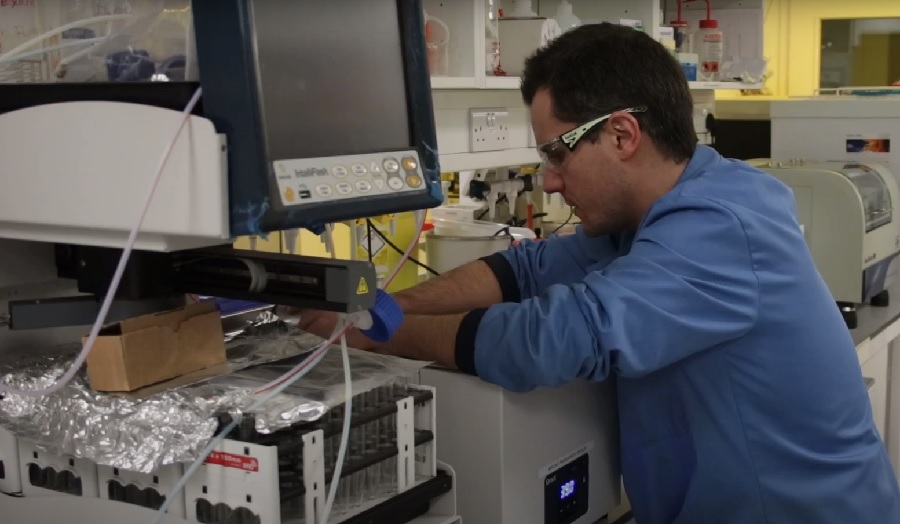Dr Bruno Sil dos Santos on 3D printing for drug delivery
Dr Bruno Sil dos Santos uses 3D printing to develop new surrogates that can mimic the same properties as human membranes to find new ways to improve approaches to drug delivery.
Date: 30 April 2020
In the last decade, the uses and possibilities of 3D printing have expanded exponentially.
The technique, also known as additive manufacturing, involves creating an object by laying down successive layers of material until the object is created. Each of these layers can be seen as a thinly sliced horizontal cross-section of the eventual object. It can be used to create car parts, smartphone cases, jewellery, action figures, and even replacement human organs.
For Dr Bruno Sil dos Santos, Senior Lecturer in Pharmaceutical Sciences at London Met’s School of Human Sciences, 3D printing is a valuable mechanism to create new drug delivery systems. In the lab, he is working to find new ways to improve the approaches, formulations, technologies, and systems for transporting a pharmaceutical compound in the body and safely achieve its desired therapeutic effect.
He and his team use 3D printing to develop new surrogates that can mimic the same properties as human membranes. Specifically, they are currently developing a surrogate that mimics the properties of fingernails.
“When we want to introduce new medicines into the market,” Dr Sil dos Santos explains, “we always have to test them against these biological membranes. Getting these biological membranes can be troublesome and quite expensive. If you need to get, for example, human skin, or scalp, or nails, these usually come from surgical procedures or from cadavers.
“Nails mainly come from cadavers, so they can be extremely expensive and difficult to find. What we’re trying to do here is to replicate the same types of membrane using 3D printing. This will facilitate the introduction of new medicines in the market. Instead of waiting for these new types of membrane to be available, we can just create them in the lab using the 3D printer.”
The potential for 3D printing in medicine is enormous, then. It can speed up the process of drug discovery at a fraction of the cost of alternative methods.
Dr Sil dos Santos added: “At this stage in its development, we’re finding ways to bridge 3D printing with different sciences. Every new project starts with an idea. When an idea pops up, it’s all a question of designing what we need, and then trying to replicate that using different types of polymers. The polymeric science and the chemistry behind it is extremely important, because that will be the backbone of the 3D printing.”
Read more: Sil B.C., et al., “3D‐printed Franz type diffusion cells”, International Journal of Cosmetic Science, Volume 40, Issue 6, December 2018, pp. 604-609
Sil, B.C.; Patel, A.; Crowther, J.M.; Moore, D.J.; Hadgraft, J.; Hilton, S.T.; Lane, M.E. A Preliminary Investigation of Additive Manufacture to Fabricate Human Nail Plate Surrogates for Pharmaceutical Testing. Pharmaceutics 2019, 11, 250.

